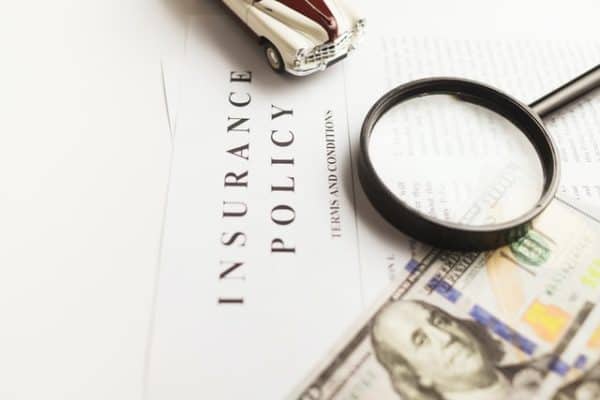Car accidents are more common than you imagine. More than 6 million passenger cars get in some type of accident every year in the US, and this data is from 2019. Road accidents are on the rise, and the need for car insurance policies is evident from this number. But even though liability coverage is mandatory in 49 states in the US (except New Hampshire), there are still over 32 million drivers who drive without it.
That’s just the number of people who do not have liability coverage. A lot more are driving with liability coverage with insufficient coverage limit, not enough to pay completely for the cost of the accident. So what happens if the at-fault party does not have car insurance, more specifically, liability coverage? Let’s take a look.

Understanding Liability Coverage
If you are thinking that getting in a car accident with someone who does not have liability coverage would not affect you because you also have liability coverage, you are in for a surprise. Your liability coverage cannot be claimed by you, but only by the other driver who gets in a car accident, that’s your fault.
Liability coverage has three parts or coverages; bodily injury per person, bodily injury per accident, and property damage. The first two will pay for the medical treatments of the driver and other passengers, while property damage is for the repairs needed for the car or other property damage.
So if you get in a car accident and have liability coverage, you don’t need to worry about paying for the medical treatments or repairs. But things can get complicated, especially when it comes to auto insurance.
Liability coverage comes with a coverage limit. This is the total amount of money the car insurance company would pay. The state usually mandates a minimum coverage limit but it is not enough in most cases. So two issues arise:
What if you get in a car accident with someone who does not have liability coverage or has the policy but it cannot completely pay for the cost of treatments and repairs? What are your options?
The Unprepared Plan
If you are unprepared for such accidents, then you need to take the legal road. The best option here would be hiring lawyers, suing the driver at fault, and then going through a long and expensive process of getting the money you need for the cost of the accident.
Of course, this is not the option anyone would choose, especially when they need a large amount of money right after a car accident. This is why you must stay prepared for such situations. There are some auto insurance policies made just for situations like these.

The Prepared Plan
Three policies can help you in this situation. These policies are collision damage waiver, personal injury protection plan, and uninsured/underinsured motorist coverage. Let’s take a look into what these policies offer and how they can help you.
Collision Damage Waiver
One of the most popular and important optional car insurance policies is the collision damage waiver. This policy covers the cost of repairs needed for your car after an accident. It can be claimed in any collision accident, irrespective of whose fault the accident was. Your car can hit another car, a pole, or a tree. If it was a collision accident, the policy can be claimed.
So if the other driver does not have liability coverage, you can use your collision damage waiver to pay for the repairs of your car. Do note that collision damage waiver can be an expensive policy. Look for the best policies available in your state and compare prices.
For example, if you live in Georgia, look for the most affordable car insurance in Georgia and select the plan that suits your needs the best. Do not skip collision coverage.
Personal Injury Protection Plan
The problem of fixing your car is fixed, but what about the excessive cost of medical treatment, ambulance rides, hospitalization, etc needed after the car accident? On average, the cost of hospitalization can climb as high as $60,000. You do not want to go into debt just to go to the hospital, right?
This is the reason many states, called the no-fault states, have made it mandatory to own a personal injury protection plan. This policy pays for the medical treatments (including ambulance rides, if medically necessary) required after a car accident. If you are thinking that this policy sounds very similar to Med Pay, you are not wrong.
Med Pay and personal injury protection plans are very similar as both cover the cost of medical treatments and hospital bills. The only place where personal injury protection differs from Med Pay is that personal injury protection also pays for lost wages for all the days you cannot go to work.
Uninsured/Underinsured Motorist Coverage
The best way to avoid getting in a financial crisis after a car accident with an uninsured driver is by having an auto insurance policy made exactly for a situation like this. As the name suggests, uninsured/underinsured motorist coverage will pay for the entire cost of the accident (according to your coverage limit) if the driver at fault is either uninsured (does not have liability coverage) or is underinsured.
When the other driver is underinsured, his/her liability coverage will pay first, and then your underinsured motorist coverage will pay the rest of the remaining amount. This car insurance policy can also be claimed when the at-fault driver flees the scene, i.e., hit-and-run case.
An important point to remember is that all the coverage mentioned above overlaps, meaning that you can claim multiple policies (if you have multiple) in case one policy cannot cover the total cost of the accident. So be safe, be prepared, and have all these policies to avoid a financial accident right after you get in a car accident.
 Gearfuse Technology, Science, Culture & More
Gearfuse Technology, Science, Culture & More


